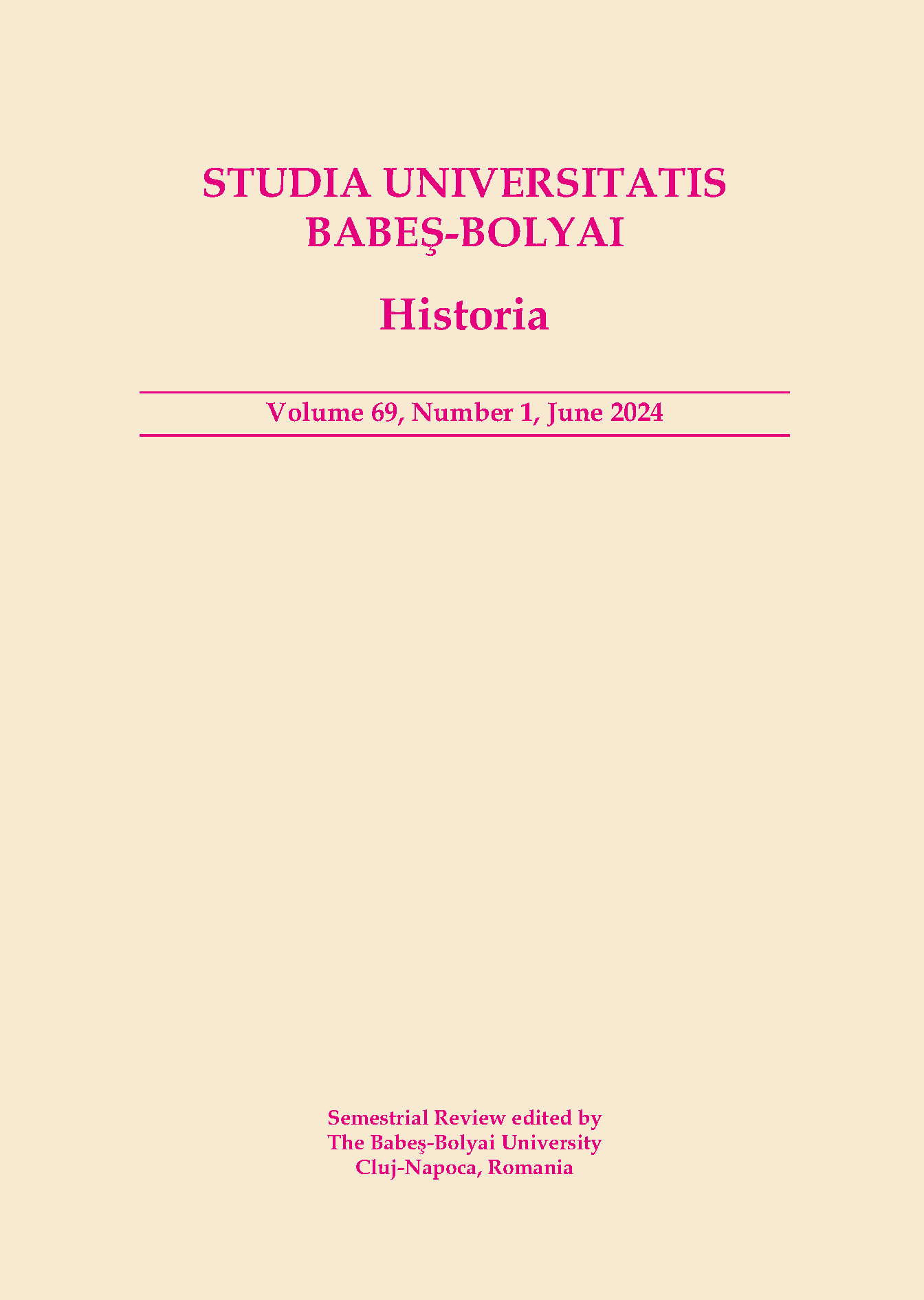The Balance of Power between Idealism and Pragmatism: The Dynamics of Spheres of Influence in the International System
DOI:
https://doi.org/10.24193/subbhist.2024.1.05Keywords:
balance of power, Regional Security Complex, spheres of influence, conferences, world orderAbstract
This article investigates the enduring relevance of balance of power theory within international relations, specifically examining the dynamic between idealistic aspirations and pragmatic considerations in the structuring of spheres of influence. It explores how the concept of power balancing has historically underpinned major power negotiations, using the Treaty of Versailles (1919) and post-World War II peace conferences as focal case studies. These events exemplify how states have utilized balance of power strategies to curb hegemonic ambitions and promote systemic stability. By integrating the balance of power framework with the Regional Security Complex (RSC) theory, this study highlights the reciprocal impacts between global structures and regional security practices, emphasizing the crucial role of major power endorsements in sustaining regional alliances, as seen in interwar Central and Eastern Europe. The analysis demonstrates that while power balancing efforts aim to foster a stable international system, legitimacy and comprehensive support from larger powers remain essential. Ultimately, this study posits that effective stability requires not merely a distribution of power but also cooperative security measures, assuming that a durable order relies on inclusive strategies that acknowledge and respect the security interests of both great and smaller powers.
Rezumat: Acest articol investighează relevanța durabilă a teoriei echilibrului de putere în relațiile internaționale, examinând în mod specific dinamica dintre aspirațiile idealiste și considerațiile pragmatice în structurarea sferelor de influență. Explorează modul în care conceptul de echilibrare a puterii a susținut istoric negocierile marilor puteri, folosind Tratatul de la Versailles (1919) și conferințele de pace de după Al Doilea Război Mondial ca studii de caz principale. Aceste evenimente exemplifică modul în care statele au utilizat strategiile de echilibru de putere pentru a limita ambițiile hegemonice și a promova stabilitatea sistemică. Prin integrarea cadrului echilibrului de putere cu teoria Complexului de Securitate Regională (CSR), acest studiu evidențiază impacturile reciproce dintre structurile globale și practicile de securitate regionale, subliniind rolul crucial al sprijinului marilor puteri în susținerea alianțelor regionale, așa cum s-a văzut în Europa Centrală și de Est interbelică. Analiza demonstrează că, deși eforturile de echilibrare a puterii au ca scop promovarea unui sistem internațional stabil, legitimitatea și sprijinul complex din partea marilor puteri rămân esențiale. În cele din urmă, acest studiu susține că stabilitatea efectivă necesită nu doar o distribuție a puterii, ci și măsuri de securitate cooperativă, considerând că ordinea durabilă se bazează pe strategii incluzive care recunosc și respectă interesele de securitate atât ale marilor, cât și ale micilor puteri.
Cuvinte-cheie: echilibrul puterii; Complexul Regional de Securitate; sfere de influență; conferințe, ordine mondială
References
1. Alexandrescu, M. (2019). Organizarea cadrului de negociere la Conferința de la Paris (1919). In M. Mureșan & M. Trufan (Coord.), Multiculturalism in Transilvania după Conferința de Pace de la Paris (pp. 44-75). Editura Casa Cărții de Știință.
2. Alexandrescu, M. (2022). Central Europe as a regional security (sub)complex in the interwar period. Studia Universitatis Babeș-Bolyai Historia, 67(1), pp. 101-114.
3. Alexandrescu, M. (2024). Refusal to negotiate: Britain’s position and impact on the World War in 1940. Transylvanian Review, 33(1), Spring. https://doi.org/10.33993/TR.2024.1.08
4. Bakić, D. (2013). ‘Must Will Peace’: The British Brokering of ‘Central European’ and ‘Balkan Locarno’. Journal of Contemporary History, 48(1), pp. 24-56.
5. Buzan, B., & Wæver, O. (2003). Regions and Powers: The Structure of International Security. Cambridge University Press.
6. Carr, E. H. (2001). The Twenty Years’ Crisis, 1919-1939: An Introduction to the Study of International Relations. Palgrave.
7. Erickson, J. (1983). The Road to Stalingrad: Stalin’s War with Germany. Weidenfeld & Nicolson.
8. Gaddis, J. L. (2005). The Cold War: A New History. Penguin Press.
9. Holsti, K. J. (1995). International Politics: A Framework for Analysis. Prentice Hall.
10. Kissinger, H. (1994). Diplomacy. Simon & Schuster.
11. Lloyd George, D. (1938). The Truth about the Peace Treaties. Victor Gollancz.
12. Lukács, J. (1999). Five Days in London: May 1940. Yale University Press.
13. Morgenthau, H. J. (1948). Politics Among Nations: The Struggle for Power and Peace. Alfred A. Knopf.
14. Roberts, G. (1999). The Soviet Union and the Origins of the Second World War: Russo-German Relations and the Road to War, 1933-1941. Palgrave Macmillan.
15. Seymour, C. (1928). The Intimate Papers of Colonel House. Houghton Mifflin Company.
16. Trachtenberg, M. (1999). A Constructed Peace: The Making of the European Settlement, 1945-1963. Princeton University Press.
17. Wandycz, P. S. (1981). The Little Entente: Sixty Years Later. The Slavonic and East European Review, 59(4), pp. 548-564.
18. Westad, O. A. (2000). The Global Cold War: Third World Interventions and the Making of Our Times. Cambridge University Press.
Downloads
Published
How to Cite
Issue
Section
License
Copyright (c) 2025 Studia Universitatis Babeș-Bolyai Historia

This work is licensed under a Creative Commons Attribution-NonCommercial-NoDerivatives 4.0 International License.



